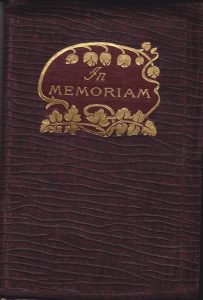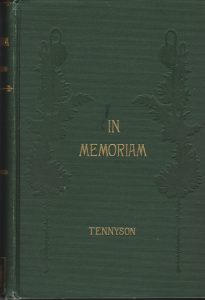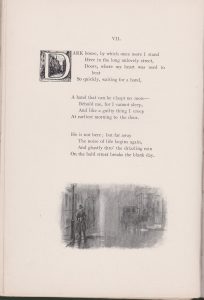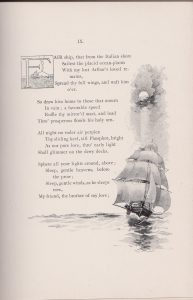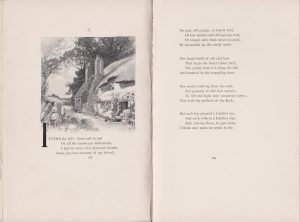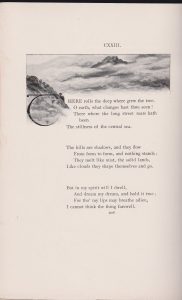
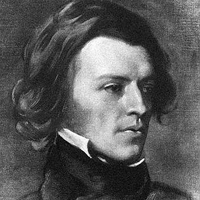
(University Days–left: Arthur Hallam; right: Alfred, Lord Tennyson)
“‘Tis better to have lov’d and lost,/Than never to have loved at all–“
This is the most famous poem about friendship, grief vs. ‘moving on’, physical change vs. permanent memory, and obsession. Tennyson and Hallam were close young friends in their early 20s who met at Cambridge and were members of the famous Apostles group. The popular, talented, philosophical Hallam wrote a very positive review of his friend’s first book and Tennyson was admitted to the Apostles, though he was from humble origins in Lincoln.
Hallam died suddenly abroad and his death greatly affected Tennyson for the rest of his life. The influence of Hallam can be seen throughout Tennyson’s work from “Ulysses” to “Idylls of the King”.
The 120+ sections “In Memoriam” took 17 years to write and was actually a series of poems in four-line stanzas with an ABBA rhyme scheme which reveals the author’s circular and repetitive shifts between grief and attempted resolution. If you listen to the online reading of the complete poem by–I should add–an excellent female reader, it takes 2+ hours in total (can be done in installments if preferred).
The death of Hallam was obviously the most important event in Tennyson’s life, something greater than his marriage or events of family members/family life. He was clearly motivated and obsessed by Hallam, who was a very popular charismatic young man and a Cambridgean ‘bright young thing’. He even named one of his sons after Hallam.
Nature is constant throughout he poem; the poet uses many memorable natural images. Tennyson, after all, was a post-Romantic, and this melancholic work influenced aesthetes and poets who came after him such as Christina Rossetti, Hardy, and Housman, even T.S. Eliot in the early 20th century.
Tennyson was the Victorian poet who epitomized best the struggle between romance and reality, notably on the facts of change and of time passing. He was also influenced by the era’s conflict between Darwinian evolution and Christian doctrine. So, in the poem, he embraces both/simultaneously the desire to mourn in excess and the recognition that one must move on and forward in reality after death.
A couple of interesting olde editions of the poem:
(1900ish U.S. leatherette ed.)
(1897, Ford, Howard & Hulbert (US) ed. nicely illustrated by Harry Fenn: below pages)
(Tennyson describing himself going to Hallam’s house after his death.)
(Tennyson describing the ship bringing Hallam’s body home from abroad.)
(Hallam remains present, yet, simultaneously, Tennyson knows he is dead.)
(Tennyson’s inner conflict: he is aware of the fact of physical change, but cannot let go of his friend and memories of him.)

